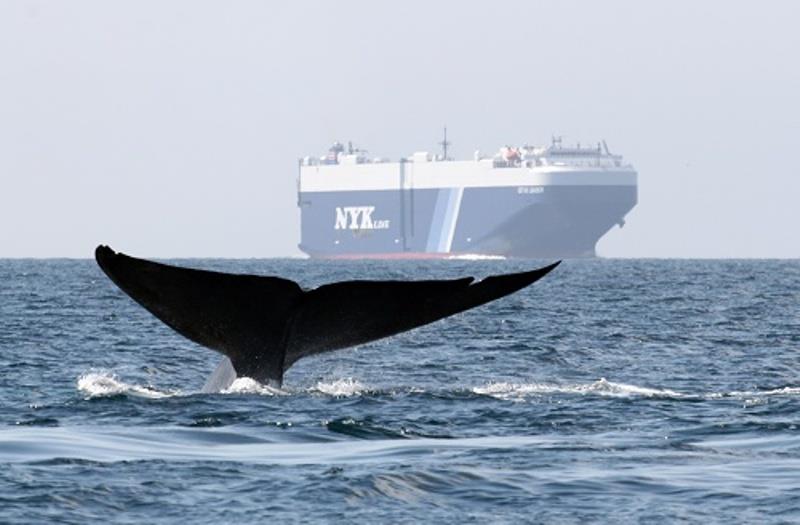
California clean-air mandates may reduce ship risk for whales
by NOAA Fisheries 22 Apr 2018 03:15 PDT

California clean-air mandates may reduce ship risk for whales © John Calambokidis of Cascadia Research
Clean-fuel standards and coastal low-emission zones (emission control areas, or ECAs) designed to clean up California's air had the side effect of slowing down ship traffic.
According to a new NOAA Fisheries analysis of regional ship traffic from 2008 to 2015, this may have reduced risk to whales since they are less likely to be killed by ships traveling at lower speeds. The analysis is based on large commercial ships, with a particular focus in the study on freight vessels (e.g., container, general cargo, bulk carriers, refrigerated cargo, vehicle carriers, etc.) which make up a substantial portion of the traffic.
Shipping lanes off California experience some of the heaviest ship traffic in the world, with thousands of vessel calls from Asia and elsewhere to North American markets through the ports of Los Angeles, Long Beach, and Oakland. In southern California, much of the traffic has followed the Santa Barbara Channel between the Channel Islands and the mainland, which is also a prime feeding area for blue whales, humpback whales and other whales and other marine mammals.
The establishment of ECAs and clean fuel standards, first in 2009 and expanded in subsequent years, led to vessels reducing speeds and in some cases adjusting their routes farther offshore, probably to conserve their use of more expensive clean fuels, researchers concluded in the study published last week in the journal Ocean & Coastal Management. Slower speeds generally reduce the risk of ships fatally striking whales.
"The shipping industry was faced with higher fuel prices and changing mandates, and this seems to have affected how they operated their vessels," said T.J. Moore, a research analyst at NOAA Fisheries' Southwest Fisheries Science Center in La Jolla, Calif., and lead author of the study.
State authorities created the first ECA off California in 2009 covering coastal waters, including the Santa Barbara Channel. Many ships avoided the ECA, and may have increased speeds, by traveling south of the Channel Islands outside the Santa Barbara Channel and the ECA. So, this represented a temporary change that may not have been favorable for whales in that area.
In 2011 the California Air Resources Board (CARB) expanded the ECA to include areas south of the Channel Islands, and in 2012 CARB tightened state fuel standards further as the North American ECA was implemented by the International Maritime Organization, with federal partners, out to 200 nautical miles. Ships faced higher costs for cleaner-burning fuels over a wider area compared to traditional bunker fuel, which produces more pollution.
Ships could no longer avoid the ECA by shifting their routes south of the Channel Islands, or offshore in other parts of California, so most traffic shifted back toward previously used routes and slowed down over time (for example, average monthly vessel speeds falling from 19.7 to 13.4 knots between 2008 and 2015 in the Santa Barbara Channel). The study analyzed ship traffic based on automatic identification system (AIS) transponders carried by commercial ships.
The authors noted that "slower vessel speeds reduce the risk of fatal collisions with large whale species, the relative amount of underwater noise introduced by ships, and the amount of vessel air-borne emissions." In the Santa Barbara Channel, they estimated that the slower average ship speeds could represent a 20 percent reduction in the probability that a whale-vessel collision would be fatal to the whale.
The average number of whale strandings each year that were known or suspected to be caused by a ship strike within the study area dropped from 7.75 (2008 to 2011) to 2.75 (2012 to 2015), the researchers reported. While many factors may have affected this change, and conclusions should not be drawn, the authors note that ship traffic variability could have played some role.
The authors of the study concluded that regulatory actions or other economic events that affect fuel prices should be considered in marine planning. It is also important to incorporate ship traffic variability into risk assessment work and other analyses of shipping impacts on marine ecosystems. Risk assessment research is underway to better understand the impact of these changes on risks to various whale species.
Read the publication
Learn more